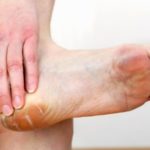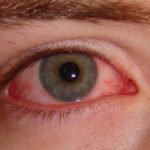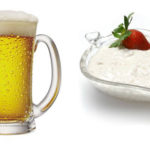Styes, while not life-threatening, can cause discomfort due to inflammation and infection. Medical advice from Saigon Eye Hospital suggests that those suffering from styes should be mindful of their diet and consume the following foods:
1. What is a Stye?
 What is a Stye?
What is a Stye?
A stye is a swollen, red bump that resembles a pimple at the base of an eyelash, or it can sometimes be a localized swelling affecting part of the eyelid or even the entire eyelid.
If left untreated, styes can lead to serious complications such as corneal damage and even blindness.
2. Causes of Styes
 Causes of Styes
Causes of Styes
Styes occur when the opening of an eyelash follicle becomes blocked by oil glands or bacteria, and dirt accumulates inside, leading to an infection. Additionally, pre-existing eyelid inflammation can spread and cause styes.
Other factors that contribute to styes include: overuse of cosmetics or expired makeup, sharing towels, digestive issues, consuming spicy foods, handling contact lenses with unwashed hands, etc.
3. Symptoms
 Symptoms of Styes
Symptoms of Styes
Common symptoms of a stye include swelling and redness of the eyelid, pain when pressing on the eyelid, and a hardened lump. Individuals may also experience tearing, sensitivity to light, pus formation, and eventual rupture of the stye with drainage of pus and relief from pain.
Styes typically develop along the edge of the eyelid and can affect one or both eyes. They tend to mature and rupture within 3-4 days, but they have a high recurrence rate.
If you experience fever, changes in vision, no improvement after 2-3 days, redness and swelling below the eyelid, or severe pain, seek medical attention immediately to prevent complications.
4. Dietary Recommendations for Styes
Foods to Eat
Vitamin-Rich Foods
 Vitamin-Rich Foods
Vitamin-Rich Foods
It is crucial to consume adequate amounts of vitamins A, C, and E during the recovery process as they help expedite healing, prevent infections, reduce swelling, and boost the immune system. Here are some vitamin-rich foods:
-
Vitamin A: sweet potatoes, carrots, spinach, broccoli, cantaloupe, etc.
-
Vitamin E: almonds, sunflower seeds, avocado, butternut squash, etc.
Protein-Rich Foods
 Protein-Rich Foods
Protein-Rich Foods
Protein-rich foods such as lean meats, fish, eggs, and dairy products help promote tissue repair and limit the growth of styes.
Cooling Foods
 Cooling Foods
Cooling Foods
Consuming cooling foods like cucumbers, leafy greens, and citrus fruits provides essential nutrients, vitamins, and antioxidants while helping to reduce inflammation and promote faster healing.
Foods to Avoid
Spicy Condiments
 Spicy Condiments
Spicy Condiments
Spicy condiments like chili peppers, garlic, onions, and cinnamon should be avoided as they can stimulate tear production, cause a burning sensation, and make the stye more uncomfortable.
Stimulating Substances
 Stimulating Substances
Stimulating Substances
Refrain from consuming alcohol and tobacco as they can irritate the affected area, leading to increased itching and swelling.
Sugary and Dairy Products
 Sugary and Dairy Products
Sugary and Dairy Products
High sugar intake can be harmful as it may cause inflammation. Avoid sugary foods like cakes, ice cream, and fruit juices with added sugar to prevent eye infections. Additionally, these foods can trigger allergies, making the stye more itchy and prolonging the healing process.
Greasy and Fatty Foods
 Greasy and Fatty Foods
Greasy and Fatty Foods
Greasy and fatty foods have a heating effect and can cause inflammation and irritation around the stye, making it worse.
Processed Meats and Beef
 Processed Meats and Beef
Processed Meats and Beef
Meats such as bacon, ham, sausage, veal, and goat contain Neu5Gc, which can stimulate the immune system to produce antibodies, leading to chronic inflammation and delayed healing of styes.
Chicken, Eggs, and Glutinous Rice
 Chicken, Eggs, and Glutinous Rice
Chicken, Eggs, and Glutinous Rice
When suffering from a stye, it is advisable to avoid chicken, eggs, and glutinous rice as they can aggravate the condition, increase pus formation, and prolong the healing process.
For more information about styes and their treatment, please refer to our comprehensive guide: [Insert Link]
5. Treatment for Styes
 Treatment for Styes
Treatment for Styes
Internal Treatment:
-
Maintain eye hygiene.
-
Apply warm compresses and massage the eyelid four times a day.
-
Use prescribed eye drops or oral antibiotics.
External Treatment: Surgical incision and drainage of pus may be necessary if the stye is large or if internal treatment is ineffective after 1-2 weeks.
6. Prevention of Styes
 Prevention of Styes
Prevention of Styes
-
Protect your eyes from smoke, dust, and air pollution. Wear glasses when going out, and avoid places with heavy pollution.
-
Do not rub your eyes to prevent infection and irritation.
-
Remove makeup thoroughly every day.
-
Replace mascara every six months to avoid bacterial growth, and do not share eye makeup or towels.
-
Maintain hand hygiene and keep your hands away from your eyes.
7. Frequently Asked Questions
 Frequently Asked Questions
Frequently Asked Questions
Are styes contagious?
Styes can affect people of all ages, and they are highly contagious. Therefore, it is important not to share pillows, towels, or face cloths with others.
What should I pay attention to when I have a stye?
Avoid wearing makeup or using a mirror until the stye has healed. Additionally, maintain hand and eye hygiene when applying eye ointment or eye drops, and ensure that the containers are clean. Do not use expired eye medications, and be careful not to touch the eye or eyelid with the dropper.
This article provides insights into styes, and we hope it helps you understand this condition and the necessary precautions to take when dealing with styes.
Source: Saigon Eye Hospital
Analyzing Distinctions Between Covid-19 and Seasonal Flu Respiratory Illnesses
Have you been feeling under the weather lately? It might be difficult to tell whether it’s Covid-19 or flu symptoms you are experiencing. Fortunately, there are a few identifying factors that can help us differentiate between these illnesses. In this article, we’ll discuss the key differences between Covid-19 and seasonal flu.






































